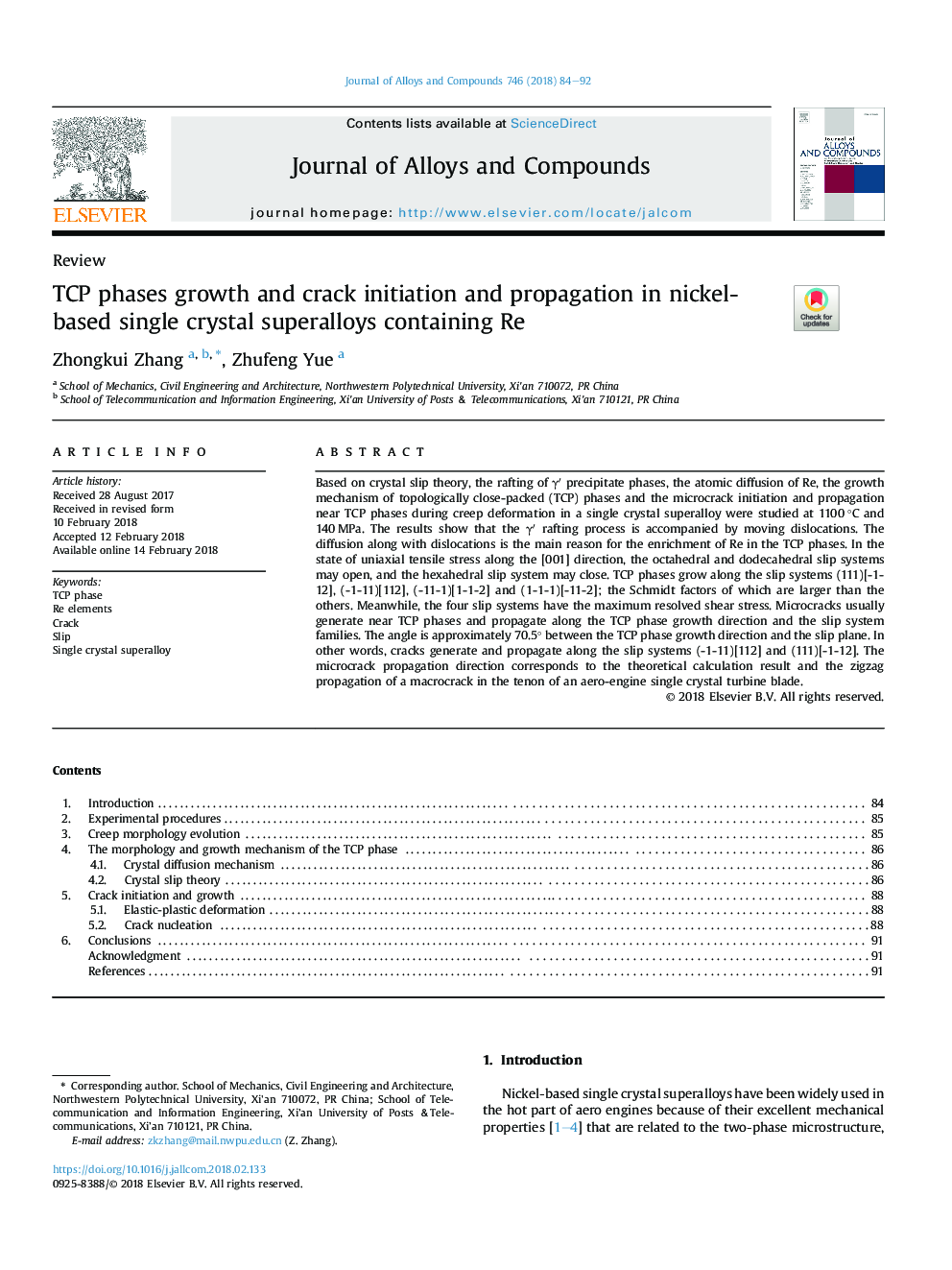| Article ID | Journal | Published Year | Pages | File Type |
|---|---|---|---|---|
| 7992555 | Journal of Alloys and Compounds | 2018 | 9 Pages |
Abstract
Based on crystal slip theory, the rafting of γⲠprecipitate phases, the atomic diffusion of Re, the growth mechanism of topologically close-packed (TCP) phases and the microcrack initiation and propagation near TCP phases during creep deformation in a single crystal superalloy were studied at 1100â¯Â°C and 140â¯MPa. The results show that the γⲠrafting process is accompanied by moving dislocations. The diffusion along with dislocations is the main reason for the enrichment of Re in the TCP phases. In the state of uniaxial tensile stress along the [001] direction, the octahedral and dodecahedral slip systems may open, and the hexahedral slip system may close. TCP phases grow along the slip systems (111)[-1-12], (-1-11)[112], (-11-1)[1-1-2] and (1-1-1)[-11-2]; the Schmidt factors of which are larger than the others. Meanwhile, the four slip systems have the maximum resolved shear stress. Microcracks usually generate near TCP phases and propagate along the TCP phase growth direction and the slip system families. The angle is approximately 70.5° between the TCP phase growth direction and the slip plane. In other words, cracks generate and propagate along the slip systems (-1-11)[112] and (111)[-1-12]. The microcrack propagation direction corresponds to the theoretical calculation result and the zigzag propagation of a macrocrack in the tenon of an aero-engine single crystal turbine blade.
Related Topics
Physical Sciences and Engineering
Materials Science
Metals and Alloys
Authors
Zhongkui Zhang, Zhufeng Yue,
